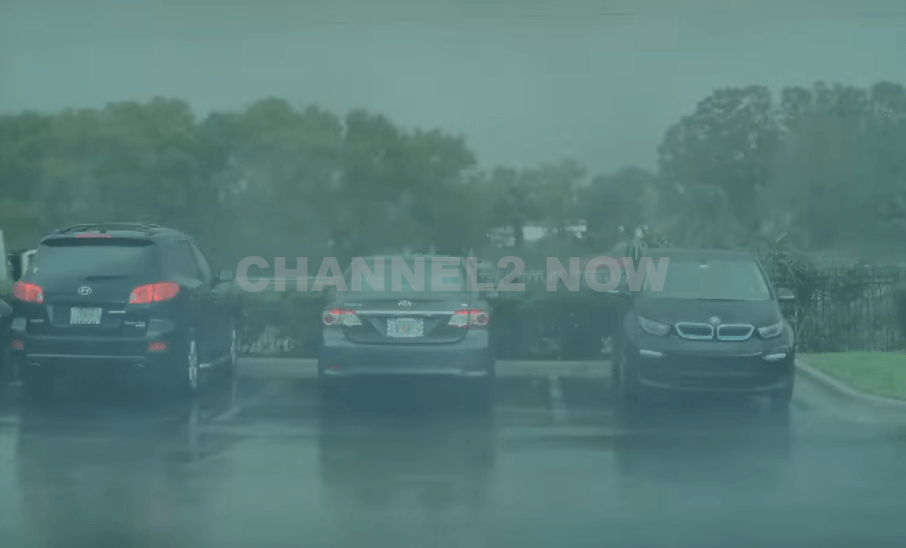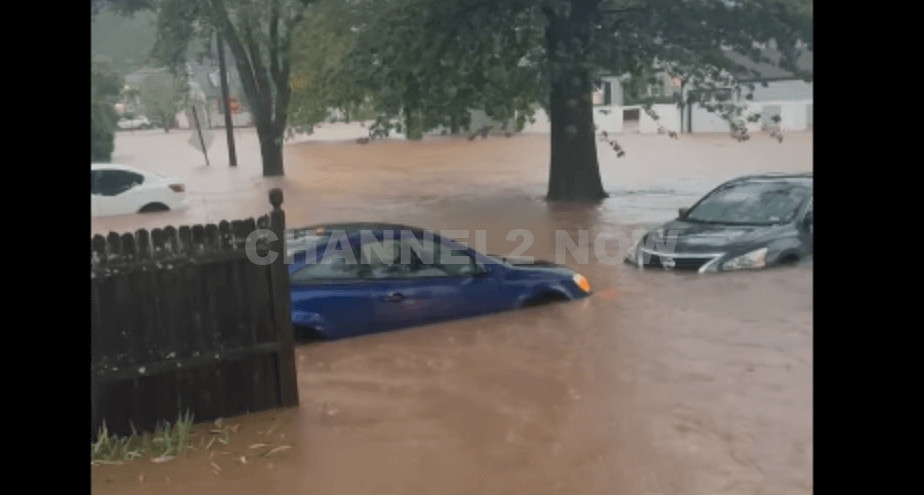Weather
Tornado Hits Lake Mary Area North of Orlando

Orlando, Fla. – Severe storms swept through Central Florida on Monday morning, bringing heavy rain, strong winds, and multiple tornado warnings across the Orlando area.
A radar-confirmed tornado touched down along Interstate 4 in Lake Mary at approximately 9:30 a.m., causing structural damage, downed trees, and power outages. Officials report that around 3,500 residents are without power as a result of the storm.
West of Lake Mary, storm-related damage was reported at the Sweetwater Clubhouse tennis courts north of Wekiva Springs Road, where trees were downed.
Further damage assessments are underway in surrounding areas.
Seminole County Fire Rescue confirmed that emergency crews were assisting with storm damage along the 2100 block of Blue Iris Place.
According to meteorologist Noah Bergren, preliminary assessments suggest that the tornado was likely an EF0 or possibly a brief EF1, with estimated touchdown near Lake Mary Boulevard on the city’s west side.
Seminole County Emergency Management spokesperson Alan Harris reported multiple instances of structural damage, including a collapsed home and overturned vehicles.
Additionally, downed trees and power lines have made several roadways impassable.
As of Monday morning, no injuries had been reported. However, authorities continue to urge caution as cleanup efforts begin.
“Do not go outside right now,” Harris advised in a public statement. “Stay in your home or business until conditions improve.”
The tornado formed as a result of an intense storm system moving across Central Florida, which brought heavy downpours, gusty winds, and the potential for additional tornado activity.
Meteorologists anticipate that the storms will move quickly through the region, with rainfall expected to taper off by early to mid-afternoon.
A Tornado Watch means that conditions are favorable for the development of tornadoes and severe thunderstorms.
It does not guarantee that a tornado will occur but serves as an alert for residents to remain vigilant.
According to the National Weather Service (NWS), a severe thunderstorm is classified as one that produces winds of 58 mph or higher and/or hail measuring one inch in diameter or larger.
Officials continue to monitor weather conditions and encourage residents to stay informed through local news outlets and emergency alerts.
Weather
State of Emergency declared in parts of New Jersey due to flash flooding

NEW JERSEY – Torrential rainfall has triggered widespread flash flooding across northern New Jersey, leaving roadways submerged, traffic paralyzed, and numerous motorists stranded.
In response to the rapidly deteriorating conditions, Governor Phil Murphy declared a State of Emergency Monday evening at 7:33 p.m., urging residents to stay indoors and avoid unnecessary travel.
“Please stay indoors and avoid unnecessary travel. Stay safe, New Jersey,” Murphy wrote in a statement released on social media.
The flash flooding has severely impacted several major roadways, including:
- Route 22: Entire sections of the highway were completely underwater, with numerous vehicles stalled in rising floodwaters. Emergency responders are on scene assisting trapped motorists.
- New Jersey Turnpike: Near Newark, both northbound and southbound lanes experienced heavy flooding, resulting in lane closures and significant traffic delays. Some areas of the Turnpike are reported to be completely impassable as water levels continue to rise.
Residents described scenes of devastation, with roads transformed into rivers and entire neighborhoods inundated. Video footage from affected areas shows cars partially submerged, and water rushing through intersections and parking lots.
Officials have issued a strong warning: “Turn Around, Don’t Drown.” Flash flooding remains an active threat as more rain is forecast throughout the evening and into Tuesday.
Emergency management teams across the state are working to coordinate response efforts, deploy high-water rescue vehicles, and mitigate further flooding.
Despite the swift response, public reaction has been mixed, with some residents criticizing the timing and preparedness of local and state agencies.
One social media user remarked, “Don’t bother calling FEMA, nobody will answer,” reflecting growing frustration over emergency response delays.
The duration of the State of Emergency remains unclear, but officials stress that residents should continue to monitor official alerts, follow emergency guidance, and contact 2-1-1 for shelter assistance if displaced.
If you are experiencing a flood-related emergency, contact local authorities immediately.
This is a developing situation. More updates will follow as the weather event continues to unfold.












